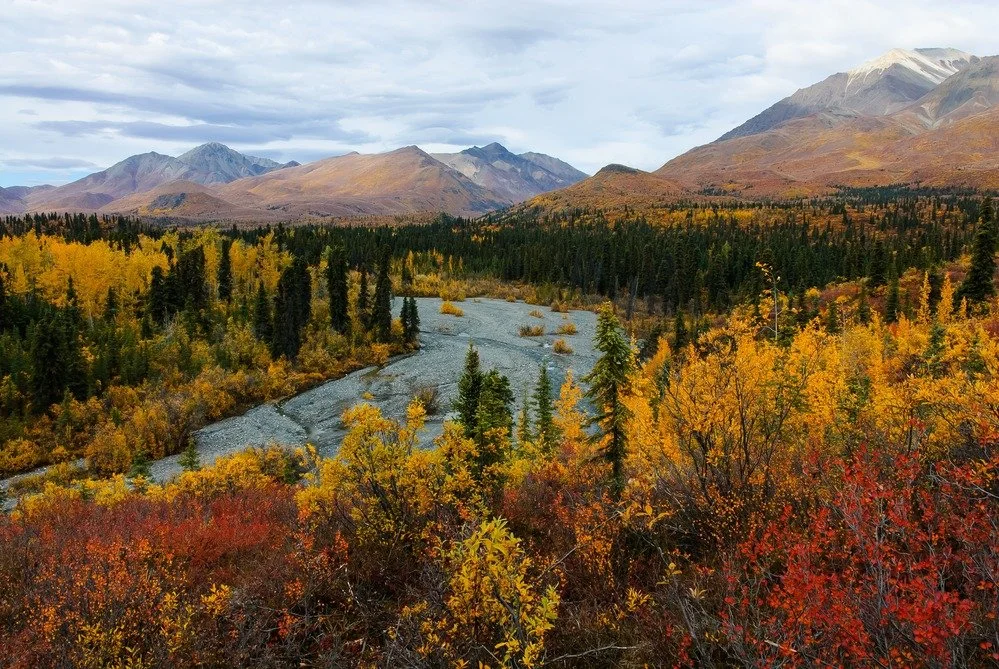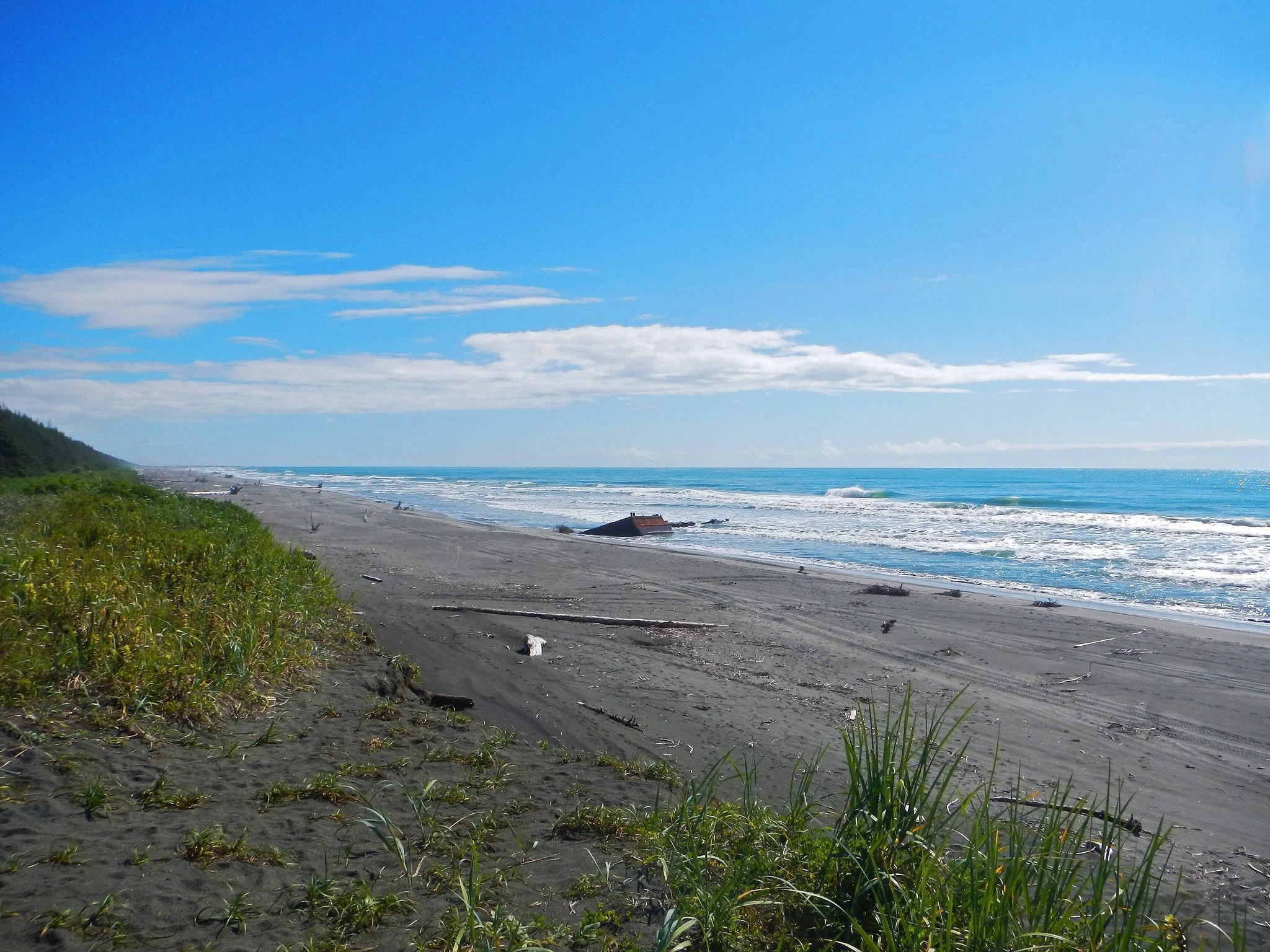Wrangell-St. Elias National Park (Alaska)
An awe-inspiring expanse of untamed wilderness located in southeastern Alaska, Wrangell-St. Elias National Park and Preserve is a testament to the raw power and majesty of nature. Encompassing some of the most dramatic landscapes on Earth, this vast park invites visitors to experience the unparalleled beauty and grandeur of North America's largest protected area.
Established in 1980, Wrangell-St. Elias National Park and Preserve spans over 13 million acres, an area larger than Switzerland, and includes towering mountain ranges, immense glaciers, and wild rivers. The park is home to four major mountain ranges, including the volcanic Wrangell Mountains and the rugged St. Elias Mountains, which feature nine of the 16 highest peaks in the United States.
The diverse ecosystems within Wrangell-St. Elias National Park and Preserve support an incredible array of plant and animal life. Iconic species such as grizzly bears, moose, and Dall sheep inhabit the park's varied landscapes, while the coastal regions provide critical habitat for sea lions, seals, and seabirds. The park's lush forests, vast tundras, and icy realms host a rich tapestry of flora, adding to the area's distinctive allure.
Visitors to Wrangell-St. Elias National Park and Preserve can partake in a wide range of recreational activities that highlight the park's breathtaking beauty and remote wilderness. The park offers countless opportunities for hiking, backpacking, and mountaineering, allowing intrepid explorers to traverse its diverse landscapes and conquer challenging peaks. River rafting, fishing, and flightseeing are also popular activities, providing unique perspectives on the park's immense scale and stunning scenery. Additionally, visitors can learn about the park's rich cultural history, including its mining past and indigenous heritage, through interpretive displays and guided tours.
The communities of Copper Center, McCarthy, and Kennecott serve as gateways to Wrangell-St. Elias National Park and Preserve, offering a variety of accommodations, dining options, and local attractions. These remote towns, steeped in history and character, ensure that every visitor can experience the park's awe-inspiring beauty and untamed wilderness in comfort and style.
MUST SEE SITES
Kennecott Mines: This historic mining town located in the heart of Wrangell-St. Elias National Park offers visitors a chance to step back in time and experience the area's rich history. The town features several well-preserved buildings, including a power plant, a general store, and a hospital, and visitors can take a guided tour to learn about the town's fascinating history.
McCarthy Road: This scenic road offers stunning views of the surrounding wilderness and leads to the historic Kennecott Mines National Historic Landmark. Visitors can explore the area by hiking one of the park's trails, attending a ranger-led program, or simply taking in the stunning views of the unique landscape.
Root Glacier: This stunning glacier is a popular spot for hiking and offers visitors the opportunity to explore the unique landscape of the park up close. Visitors can explore the area by hiking one of the park's trails, attending a ranger-led program, or simply taking in the stunning views of the unique landscape.
Wrangell Mountains: This scenic mountain range offers stunning views of the surrounding wilderness, as well as opportunities for hiking and wildlife viewing. Visitors can explore the area by hiking one of the park's trails, attending a ranger-led program, or simply taking in the stunning views of the unique landscape.
Donoho Lakes: This secluded area located in the western part of Wrangell-St. Elias National Park offers visitors a chance to explore the park's unique wilderness up close. The area features several pristine lakes and offers a chance to see wildlife like moose, bears, and wolves in their natural habitats. Visitors can hike along the trail that leads to the lakes and enjoy the stunning views of the surrounding mountains and glaciers.
GETTING THERE
The most common way to arrive at Wrangell-St. Elias National Park is by car or by plane. The park is located in southeastern Alaska, and can be accessed via several highways. From Anchorage, you can take the Glenn Highway to the Richardson Highway, which leads to the park's entrance.
If you prefer to travel by air, there are several airports that serve the Wrangell-St. Elias National Park area, including the Cordova Municipal Airport, the Yakutat Airport, and the Valdez Airport. These airports offer flights from several cities in Alaska, including Anchorage and Juneau.
Once you arrive at Wrangell-St. Elias National Park, the best way to get around is by car or by foot. The park is home to several hiking trails, including the Root Glacier Trail and the Kennecott Mines Trail. There are also several campgrounds available for overnight stays, and ranger-led programs and tours are offered throughout the year.
GATEWAY COMMUNITIES
The towns of Copper Center, Glennallen, and McCarthy serve as the primary gateway communities to Wrangell-St. Elias National Park, offering various accommodations, dining options, souvenir shops, and outdoor recreation equipment rentals.
ACCOMMODATIONS
Visitors can find various lodging options in the surrounding communities, including hotels, motels, lodges, and vacation rentals. Additionally, there are several campgrounds and backcountry camping opportunities available within the park.
CAMPGROUNDS
Wrangell-St. Elias National Park offers a mix of developed campgrounds and backcountry camping opportunities. Developed campgrounds include Kendesnii Campground and Nabesna Road Campground, which provide basic amenities such as restrooms, drinking water, and picnic areas. Backcountry camping is available throughout the park, offering a more remote and rugged experience for experienced campers.
WEATHER/CLIMATE
Wrangell-St. Elias National Park has a diverse climate, with coastal, mountain, and interior weather patterns. Summers can be mild and wet, with temperatures ranging from the 50s to 70s Fahrenheit, while winters can be extremely cold, with temperatures well below freezing. Visitors should be prepared for potential rain, snow, and rapidly changing weather conditions.
RECREATION OPPORTUNITIES
Numerous recreational opportunities await visitors, including hiking, backpacking, mountaineering, and wildlife viewing. The park offers miles of hiking trails, providing opportunities to explore diverse landscapes, from glaciers to alpine tundra. Popular hikes include the Root Glacier Trail, the Bonanza Mine Trail, and the Skookum Volcano Trail. Mountaineering and glacier trekking are popular activities, with several guiding companies offering guided trips. Wildlife viewing is also popular, with a variety of species such as Dall sheep, moose, and brown bears inhabiting the park.
VISITOR CENTER
Wrangell-St. Elias National Park has several visitor centers, including the Copper Center Visitor Center, the Chitina Ranger Station, and the Kennecott Visitor Center. These centers provide information about the park's history, ecology, wildlife, and recreational opportunities. Rangers are available to offer guidance and answer questions. The visitor centers are open daily during the visitor season, with reduced hours and services during the off-season.
THINGS TO KNOW
Entrance Fee: No entrance fee.
Pet Policy: Pets are allowed in the park but must be leashed and under control at all times. Pets are not allowed in public buildings, on trails, or in the backcountry.
Hours of operation: The park is open 24 hours a day, year-round. Visitor center hours vary seasonally and can be found on the park's website.
Website: https://www.nps.gov/wrst/index.htm
Contact phone number: (907) 822-5234
Address: Wrangell-St. Elias National Park & Preserve, Mile 106.8 Richardson Highway, Copper Center, AK 99573, United States





